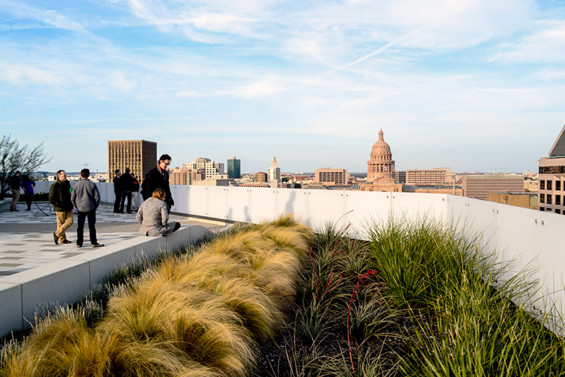The 816 Congress Roof Transformation converted unsightly, inaccessible spaces into unique green roofs and subsequently profitable building assets. The resulting main terrace has become a tenant retreat and a coveted event space, offering unprecedented views of the Texas State Capitol and its grounds. This building, designed for another era, is now competing with modern and newly built office space in downtown Austin.
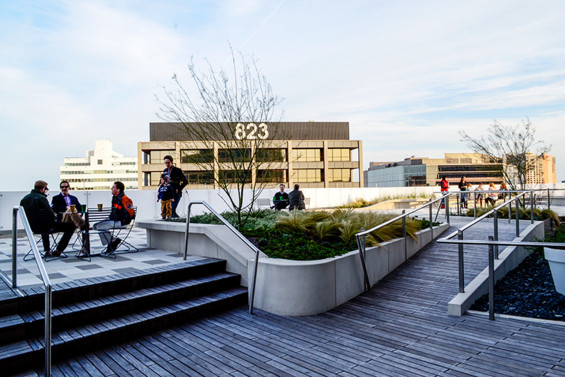
816 Congress is a 20-story office building located two blocks from the Texas State Capitol. Built in 1984, the building was constructed with terracing roof plates that acknowledge the Capitol View Corridor requirements. These roof terraces were artifacts of the era in which they were constructed – expanses of discolored roof pavers with a sprinkling of movable high wattage lighting fixtures among numerous exposed utilities. The view of these desolate expanses negatively affected the building performance in regards to leasable office space of the floors above.
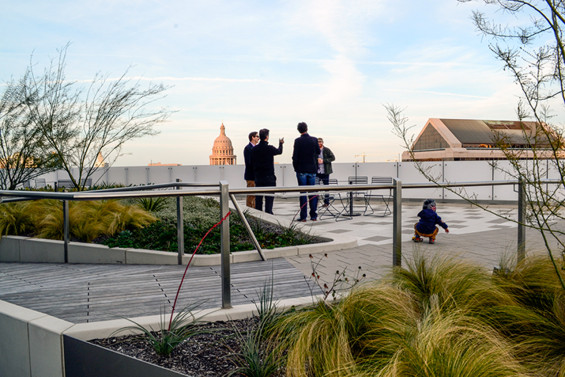
The landscape architect initially presented a simple alternative to the bleak field of pavers – what if the existing roof was covered in native plants and the view from each floor above was a carpet of green? This relatively simple concept quickly expanded into a complete roof renovation of approximately 20,000 square feet across four areas including the creation of two amenity terraces, from previously inaccessible and un-leasable space. The project challenges the performance criteria for existing rooftops and represents a unique precedent for increasing existing rooftop standards.
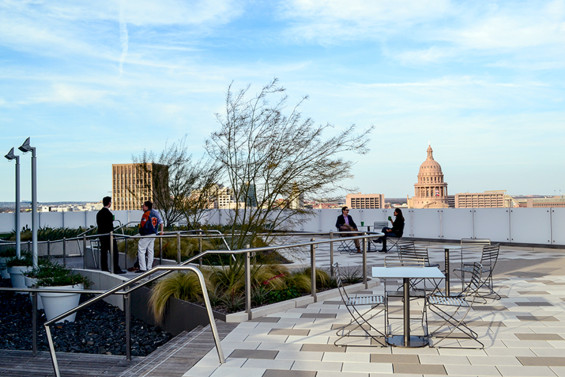
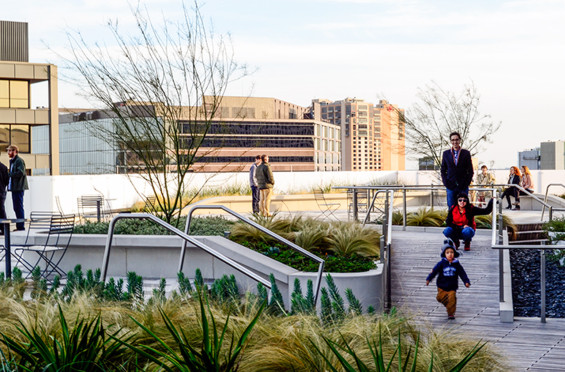
Through persistent presentations and genuine project interest, the landscape architect was able to play the exclusive role of project lead on the transformation. From the excitement of the initial concept presentations, the owner allowed the landscape architect to select the entire design team. Initially, the landscape architect identified three roofs for potential transformations. Through the design process it was decided that a fourth roof would be added to the project scope. This additional exterior space offered the unique attribute of private tenant access from the adjacent office space that would also increase the gross leasable area.
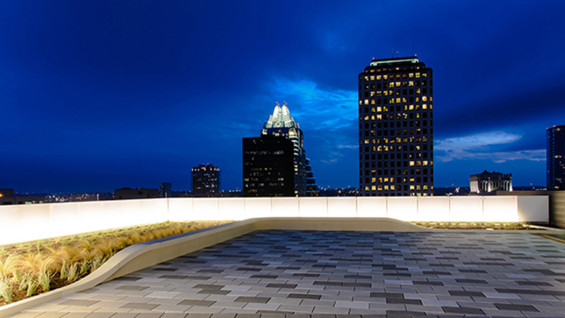
During the analysis phase, the main terrace was divided into use zones by overlaying the existing structural grid, view shed corridors, rooftop utilities, shade patterns and many other variables. The design focused on carefully balancing accessible amenity space with screening unsightly neighboring views while incorporating elements of landscape onto the roof. The building owners wanted a space that could be used continuously throughout the day and night by office employees but also able to be reserved for public announcements and private evening functions. The landscape architect designed the custom lighting system to project a pleasant, uniform glow throughout the roof terrace. This included an LED tape light embedded into the bottom of the handrails and a series of concealed LED linear array luminaires employed to illuminate the iconic white resin panel guardrail along the perimeter. All terrace lighting was specified to match the color temperature of that used on the nearby State Capitol building to create a harmonious visual connection. Light is utilized as a sculptural art form as the guardrail becomes the beacon of the green roof transformation and radiates from the heart of the central business district.
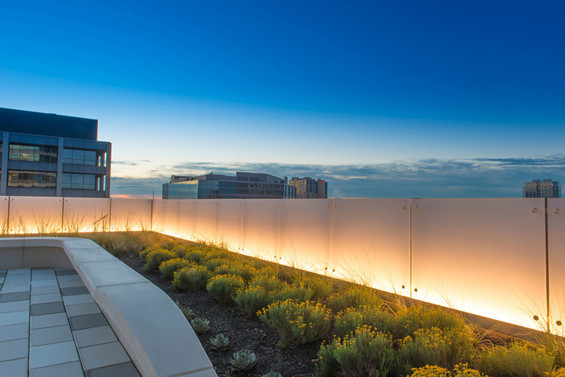
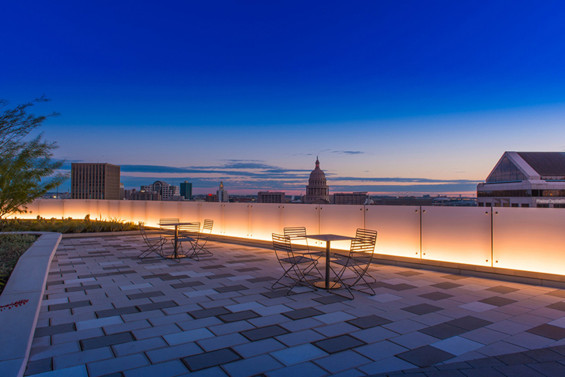
As the indirect lighting design successfully replaced the inefficient building floodlights, the landscape architect sought to incorporate additional sustainable values. The irrigation water source is the building’s air cooling system, capable of providing on average 182,000 gallons of condensate annually. The system produces water near the top of the tower which is gravity-fed from a cistern five floors above the vegetated areas at the primary terrace. Even the ‘desolate sea of pavers’ were reconditioned on site and reused as ballast material to protect the waterproofing membrane as well as securing the insulation layer. The commitment to sustainability and building employee wellness was a touchstone throughout the design process of the project.
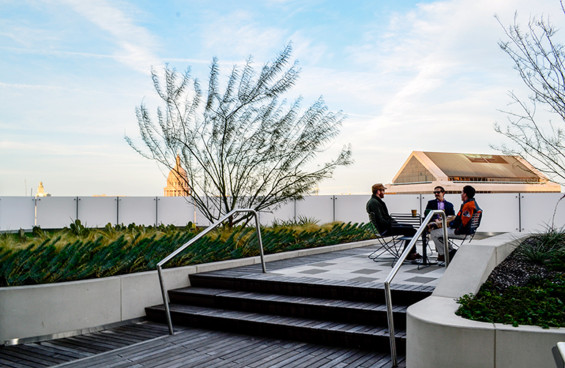
With an understanding of the benefits in the proximity to nature in the workplace to improved health and reduce stress, the design promotes a fully accessible outdoor extension of the office. The project transforms a previously inaccessible expanse of paving into an inviting and colorful public space with unmatched views. The 816 Congress Green Roof Transformation represents a one-of-a-kind sustainable repositioning of an existing building. It sets a precedent by reimagining the performance criteria of aging buildings and demonstrates how owners can renovate with an emphasis on nature for employee wellness. The project also charges landscape architects to view existing sites with an enhanced degree of creativity and leadership among various disciplines.
816 Congress Roof Transformation
Austin, Texas
dwg. urban landscape architecture
Engineers: Datum (structural), MEJ & Associates (MEP)

